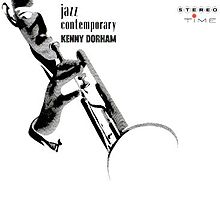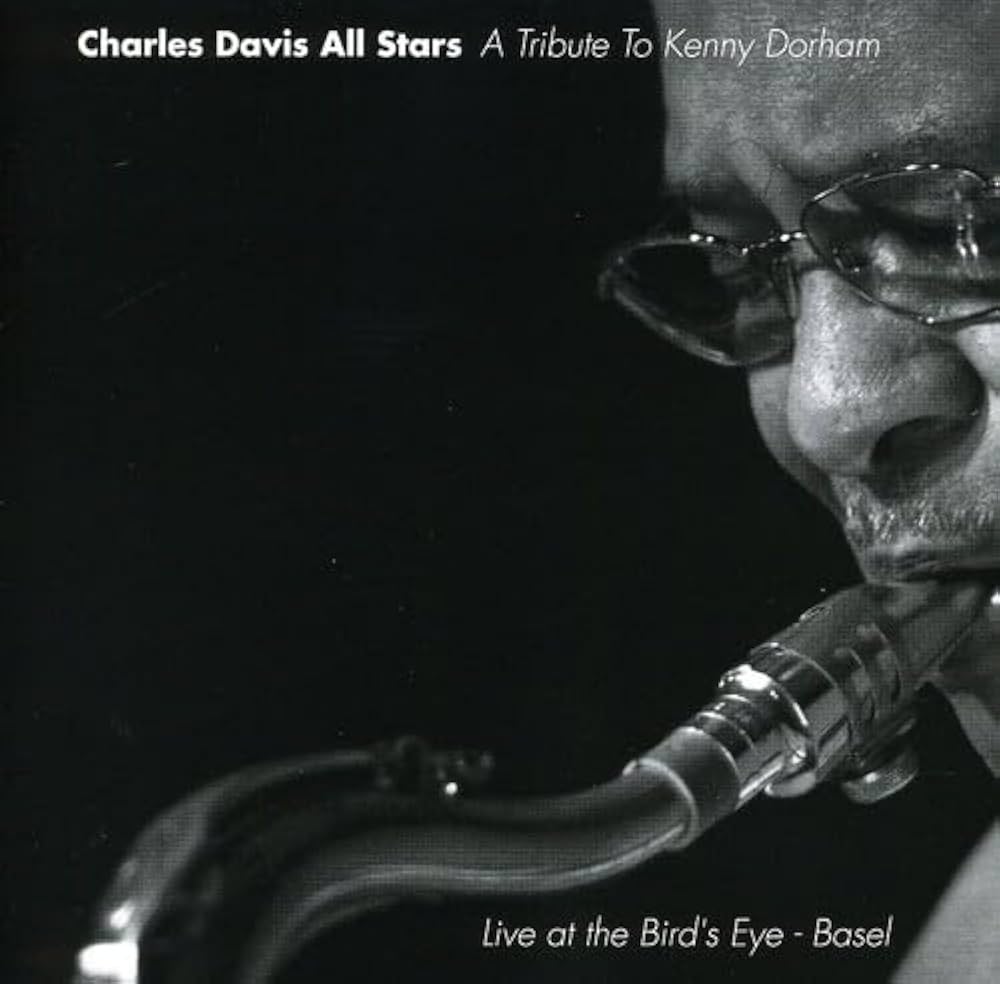Tonica – Kenny Dorham
A heartfelt gem of a composition, with all the subtlety and intricacy that defines the Kenny Dorham sound. This piece is available as a full quintet score and parts reflecting the entire recorded arrangement.
- Recording: Kenny Dorham - Jazz Contemporary
- Recorded on: February 11, 1960
- Label: Time (LPM 52004)
- Concert Key: D minor
- Vocal Range: , to
- Style: Swing (slow)
- Trumpet - Kenny Dorham
- Baritone Sax - Charles Davis
- Piano - Steve Kuhn
- Bass - Butch Warren
- Drums - Buddy Enlow
Video
- Description
- Historical Notes
- Solos
- Piano Corner
- Bass Corner
- Drum Corner
- Guitar Corner
- Inside & Beyond
- Minus You
A classic example of K.D.'s heartfelt balladry, Tonica is full of that subtle detail that is an essential part of his style. It is a complete composition with an intricate rhythm section arrangement, held together by the lyrical melody and logical changes. Instead of lead sheets, we present this song as a quintet arrangement with a full score and parts.
The arrangement is two choruses long, with a 28-measure form (three eight-measure sections and a four-measure section at the end). The first chorus' A section begins with horns and bowed bass only; piano and drums enter in the fifth measure. Within the chorus there are many changes of rhythmic feel. A swings throughout, while B and C each begin with a Latin groove (slow rumba or bolero) for four measures, followed by swing for two measures and even-8ths time in the last two; D is Latin throughout. The second chorus has a trumpet solo on the A section, mostly over a bass pedal. On the recording, Kenny Dorham returns to the melody in the next section; we include changes here on the part as the soloist could also continue improvising. The second horn part returns in the last two measures of this section, and the rest of the second chorus is largely the same as in the first.
The range of the baritone sax second part goes quite low for tenor. Our tenor second part is written mostly an octave above, in the range where Charles Davis played it on his 2009 recording (click on the second album cover for more details). In this register the notes are still mostly below the trumpet melody; sections where the second part goes above are indicated "optional 8vb".
The arrangement is two choruses long, with a 28-measure form (three eight-measure sections and a four-measure section at the end). The first chorus' A section begins with horns and bowed bass only; piano and drums enter in the fifth measure. Within the chorus there are many changes of rhythmic feel. A swings throughout, while B and C each begin with a Latin groove (slow rumba or bolero) for four measures, followed by swing for two measures and even-8ths time in the last two; D is Latin throughout. The second chorus has a trumpet solo on the A section, mostly over a bass pedal. On the recording, Kenny Dorham returns to the melody in the next section; we include changes here on the part as the soloist could also continue improvising. The second horn part returns in the last two measures of this section, and the rest of the second chorus is largely the same as in the first.
The range of the baritone sax second part goes quite low for tenor. Our tenor second part is written mostly an octave above, in the range where Charles Davis played it on his 2009 recording (click on the second album cover for more details). In this register the notes are still mostly below the trumpet melody; sections where the second part goes above are indicated "optional 8vb".
This song's title is another example of Kenny Dorham's clever word play: it is really "To Nica," a tribute to jazz patron and Baroness, Pannonica (Nica) De Koenigswarter. Dorham made a similar word transformation in the opposite direction: his youngest daughter's name, Lamesha, split into two words to title his later composition La Mesha.
Though very different in feel and tempo, on this album the melody of Tonica is closely related to another Dorham composition, Karioka, recorded later in 1960 by Freddie Hubbard—another classic example of K.D.'s knack for subtle transformation, in music as in words.
For more from this album check out Horn Salute and Sign Off.
Though very different in feel and tempo, on this album the melody of Tonica is closely related to another Dorham composition, Karioka, recorded later in 1960 by Freddie Hubbard—another classic example of K.D.'s knack for subtle transformation, in music as in words.
For more from this album check out Horn Salute and Sign Off.
Related Songs
Email Send Tonica to a friend
Send this page to a friend via email. Add your name or email in the first field. In the second, add one or more email addresses, separated by a comma.
- Recording: Charles Davis - Tribute To Kenny Dorham
- Recorded on: October 2-3, 2009
- Label: TCB (30402)
- Concert Key: D minor
- Vocal Range: , to
- Style: Swing (slow)
- Trumpet - Tom Kirkpatrick
- Tenor Sax - Charles Davis
- Piano - Claus Raible
- Bass - Giorgos Antoniou
- Drums - Bernd Reiter
Video
- Description
- Historical Notes
- Solos
- Piano Corner
- Bass Corner
- Drum Corner
- Guitar Corner
- Inside & Beyond
- Minus You
The arrangement on Charles Davis' recording of Tonica is largely the same as the original version. However, the form is expanded from two choruses to three. Trumpeter Tom Kirkpatrick solos for an entire chorus—basically the second half of the original arrangement—followed by an entire out melody chorus from A. Both in and out heads add cymbal rolls to the first four measures of A. In the out head there are piano chords here as well: two measures of A7, and D7sus on the third measure with a Dm6 hit to set up the melody break in the next measure.
Here on tenor sax, Davis plays the same part that he originally recorded on baritone with Kenny Dorham, largely an octave higher. He keeps the original lower register for harmony notes that are a seventh below the trumpet melody, such as the fifth measure of C and third measure of D; an octave higher here would obscure the melody notes with harmonies a step above.
Here on tenor sax, Davis plays the same part that he originally recorded on baritone with Kenny Dorham, largely an octave higher. He keeps the original lower register for harmony notes that are a seventh below the trumpet melody, such as the fifth measure of C and third measure of D; an octave higher here would obscure the melody notes with harmonies a step above.
Though Charles Davis played baritone sax with Kenny Dorham on "The Arrival Of Kenny Dorham", "Jazz Contemporary", and a 1961 Blue Note session that remains unissued, on this tribute album he plays tenor throughout. Other K.D. compositions on Davis' album include An Oscar For Oscar, Prince Albert and Sao Paulo. Trumpeter Tom Kirkpatrick's first studio recording, pianist Michael Weiss' debut "Presenting Michael Weiss," also includes a version of Dorham's La Villa.
Related Songs
Email Send Tonica to a friend
Send this page to a friend via email. Add your name or email in the first field. In the second, add one or more email addresses, separated by a comma.

Kenny Dorham
August 30, 1924 – December 15, 1972
August 30, 2025, is Kenny Dorham's 101st birthday: jazzleadsheets.com has added many new K.D. compositions. Jazz At Lincoln Center has dedicated three late-night sets to Kenny's music, played with love by young musicians who want his music to live on. Join in, play K.D. music! Read more...
There was a problem.
...


